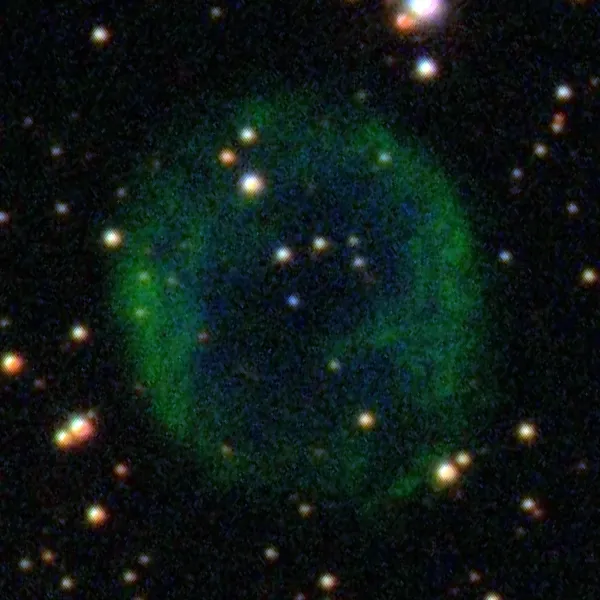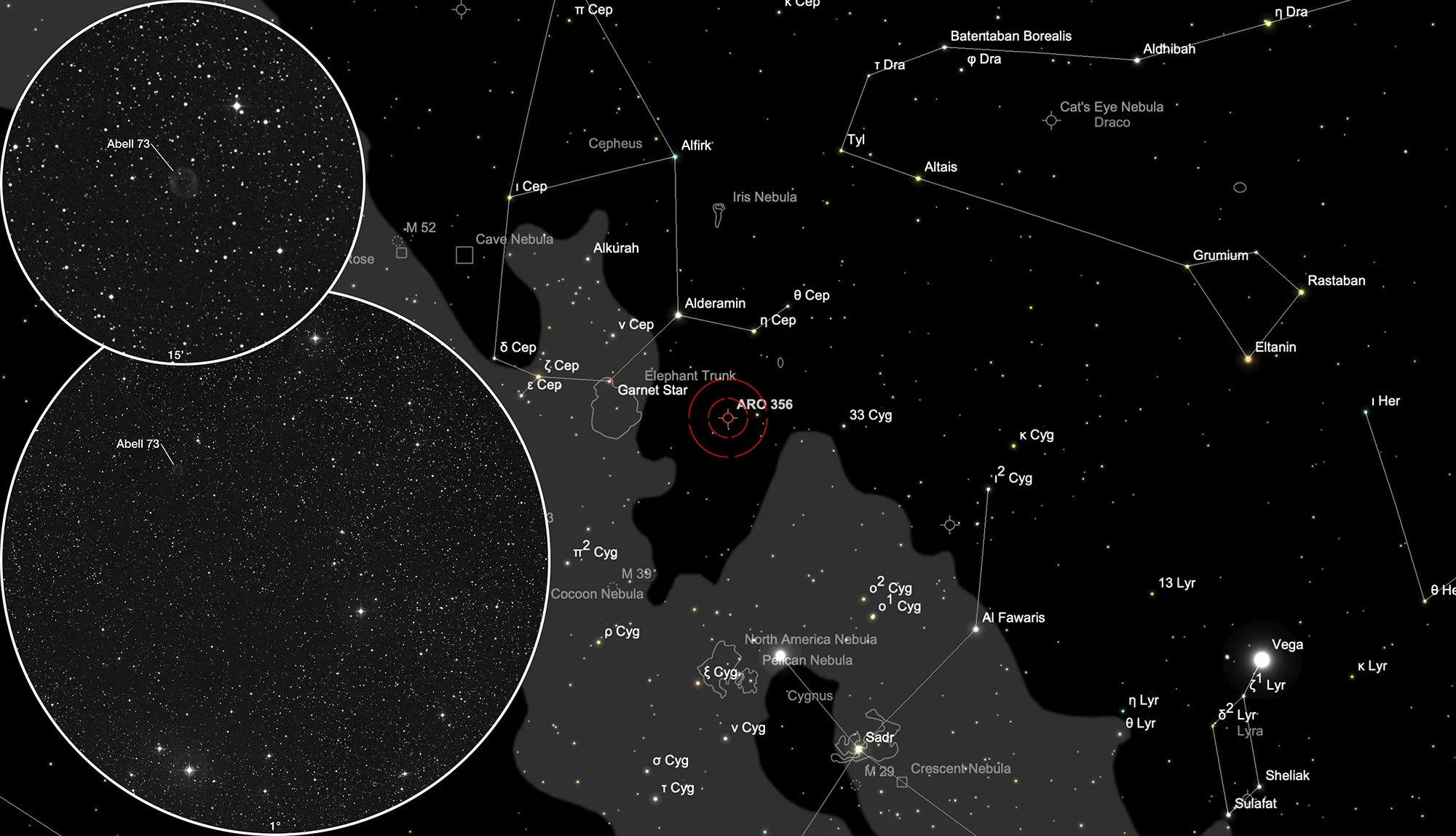Planetary Nebula Abell 73

History
The planetary nebula Abell 73 (PK 95+7.1) was discovered in 1955 by the American astronomer George Ogden Abell on the photo plates of the Palomar Observatory Sky Survey (POSS). In 1955 he published a first list of 13 globular clusters and the positions of 73 planetary nebulae. The PN had the number 60 (A55 60). In 1966 Abell published a complete list including the size and description of the 86 planetary nebulae discovered on the POSS photo plates. He described its morphological appearance as «C» (a symmetrical ring with bright spots or regions). [331, 332]
The designation PK 95+7.1 comes from the two Czechoslovak astronomers Luboš Perek and Luboš Kohoutek, who in 1967 compiled a catalog of all the planetary nebulae of the Milky Way known at the time. [146]
Physical Properties
Abell 72 is very large with an angular diameter of a little more than two arc minutes, but has a low surface brightness with 16 magnitudes. This suggests an advanced age. The distance was determined to be 1151 parsecs (around 3700 light years) in 2008. [145]
| Designations | PN G095.2+07.8: A 73, PK 95+07.1, A55 60, ARO 356, VV' 539 |
| Right Ascension (J2000.0) | 20h 56m 26s |
| Declination (J2000.0) | +57° 25' 57" |
| Dimensions | 73." (optical) |
| Expansion Velocity | 20. (O-III) 22.5 (N-II) km/s |
| C-Star Designations | AG82 416 |
| C-Star Magnitude | B: 21.1 |
| Discoverer | ABELL 1955 |
Finder Chart
The planetary nebula Abell 73 is located in the constellation Cepheus. On 4 August it is in opposition to the Sun and crosses the meridian at local midnight. The best time to observe is April to January, when it is highest at night.
